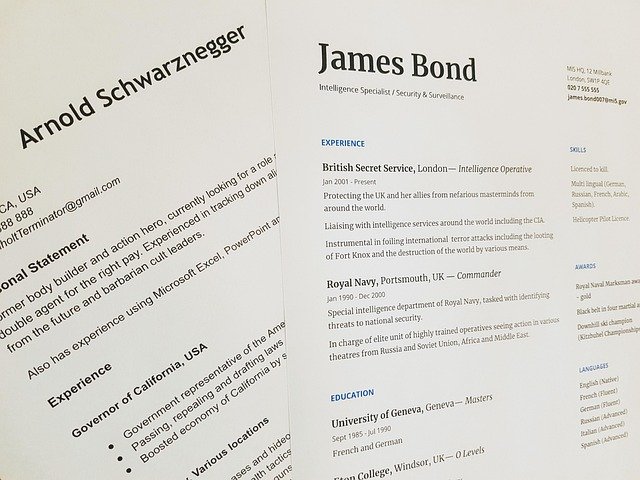How to Write a Clear and Effective Cover Letter
A cover letter is a short letter that introduces a person and explains their interest in a position. This article shows how to organize ideas, choose the right words, and make each paragraph clear and easy to read. Learn simple steps to create a strong letter that explains skills and experience in a practical way.

How to Write a Cover Letter That Gets Noticed
Writing an effective cover letter starts with understanding its purpose and structure. Begin by researching the company and position thoroughly, allowing you to tailor your message specifically to their needs. Your cover letter should complement, not repeat, your resume by expanding on relevant experiences and demonstrating your knowledge about the organization.
Start with a strong opening paragraph that immediately captures attention by mentioning the specific position you’re applying for and briefly explaining why you’re interested in the role. Follow this with one or two body paragraphs that highlight your most relevant qualifications, using specific examples and quantifiable achievements when possible. Connect your experience directly to the job requirements, showing how your skills will benefit the employer.
End with a professional closing paragraph that reiterates your interest and indicates your availability for an interview. Always include a formal sign-off and your full name.
Cover Letter Writing Tips for Maximum Impact
Effective cover letter writing requires attention to both content and presentation. Keep your letter concise, ideally fitting on one page with three to four paragraphs total. Use a professional tone that matches the company culture while letting your personality shine through appropriately.
Customize each cover letter for the specific position and company. Generic letters are easily spotted and often discarded. Instead, reference specific aspects of the job posting, mention the company by name, and explain why you’re particularly interested in working for that organization.
Avoid common mistakes such as focusing too heavily on what you want from the job rather than what you can offer the employer. Don’t simply restate your resume; instead, use storytelling techniques to provide context for your achievements. Proofread carefully for grammar, spelling, and formatting errors, as these can immediately disqualify your application.
Cover Letter Examples and Structure Guidelines
Professional cover letters follow a standard business letter format with your contact information, the date, and the employer’s details at the top. Address your letter to a specific person whenever possible, using “Dear Mr./Ms. [Last Name]” rather than generic greetings.
Successful cover letter examples typically include specific metrics and achievements that demonstrate value. For instance, instead of writing “I improved sales,” write “I increased sales by 25% over six months by implementing a new customer follow-up system.” This approach provides concrete evidence of your capabilities.
Consider the industry and position level when determining your tone and content. A cover letter for a creative position might allow for more personality and innovative formatting, while traditional industries typically prefer conservative approaches. Entry-level positions should focus on education, internships, and transferable skills, while senior-level roles should emphasize leadership experience and strategic accomplishments.
Best Cover Letter Format and Professional Presentation
The most effective cover letter format uses standard business letter structure with consistent formatting throughout. Use a professional font such as Arial, Calibri, or Times New Roman in 10-12 point size. Maintain consistent margins of one inch on all sides and use single spacing within paragraphs with double spacing between sections.
Your header should include your full name, professional email address, phone number, and city and state. Include the current date and the hiring manager’s name and title, company name, and address. If you cannot find a specific contact person, use “Dear Hiring Manager” rather than outdated phrases like “To Whom It May Concern.”
Keep paragraphs concise and well-organized. The first paragraph should be 2-3 sentences, body paragraphs should be 3-4 sentences each, and the closing paragraph should be 2-3 sentences. Use bullet points sparingly and only when they enhance readability without disrupting the letter’s flow.
Cover Letter for Job Application Best Practices
When submitting your cover letter for job application purposes, pay careful attention to the application instructions. Some employers prefer cover letters pasted into email bodies, while others want separate attachments. Follow their specifications exactly, as failure to do so may result in automatic rejection.
Save your cover letter with a clear, professional filename such as “FirstName_LastName_CoverLetter_CompanyName.pdf” or “FirstName_LastName_CoverLetter_PositionTitle.pdf.” PDF format is generally preferred as it preserves formatting across different devices and operating systems.
Submit applications during business hours when possible, typically Tuesday through Thursday for optimal visibility. Avoid Monday mornings when hiring managers are catching up on weekend emails, and Friday afternoons when attention may be focused on weekend preparations.
Conclusion
Creating a clear and effective cover letter requires careful attention to structure, content, and presentation. By following proper formatting guidelines, tailoring your message to each specific opportunity, and highlighting your most relevant qualifications with concrete examples, you can create a compelling introduction that sets you apart from other candidates. Remember that your cover letter serves as a preview of your communication skills and professionalism, making it essential to invest time in crafting a polished, error-free document that effectively represents your candidacy.




